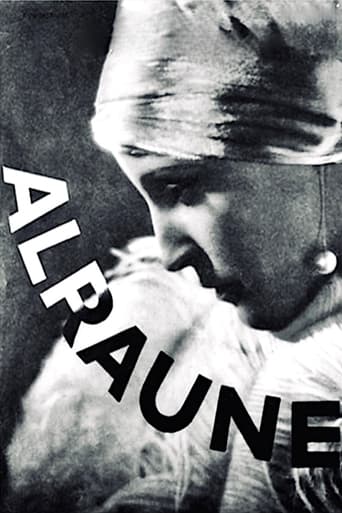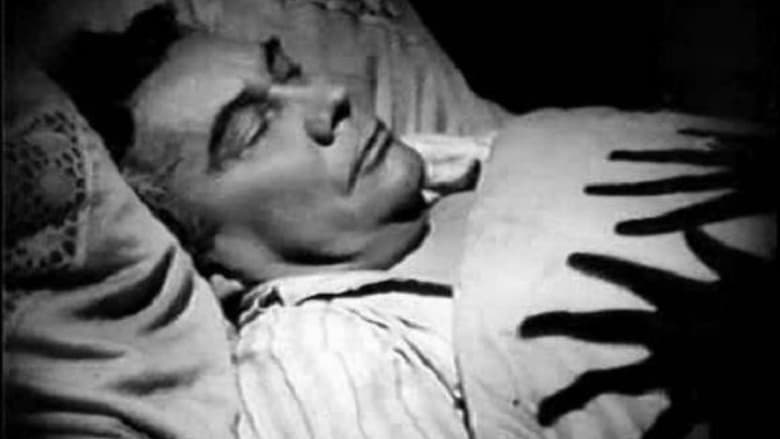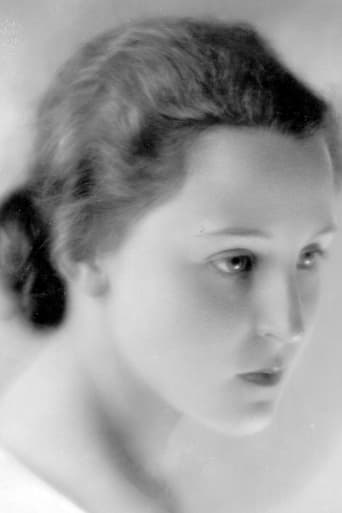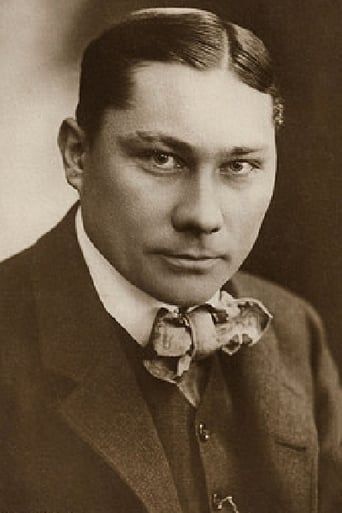

A Daughter Of Destiny (1928)
Hanns Heinz Ewers' grim science-fiction novel Alraune has already been filmed twice when this version was assembled in 1928. In another of his "mad doctor" roles, Paul Wegener plays Professor Brinken, sociopathic scientist who combines the genes of an executed murderer with those of a prostitute. The result is a beautiful young woman named Alraune (Brigitte Helm), who is incapable of feeling any real emotions -- least of all guilt or regret. Upon attaining adulthood, Alraune sets about to seduce and destroy every male who crosses her path. Ultimately, Professor Brinken is hoist on his own petard when he falls hopelessly in love with Alraune himself. Alraune was remade in 1930, with Brigitte Helm repeating her role, and again in 1951, with Hildegarde Knef as the "heroine" and Erich von Stroheim as her misguided mentor.
Watch Trailer
Cast
Reviews
Overrated and overhyped
Don't listen to the negative reviews
Entertaining from beginning to end, it maintains the spirit of the franchise while establishing it's own seal with a fun cast
Funny, strange, confrontational and subversive, this is one of the most interesting experiences you'll have at the cinema this year.
Two monsters meet in this second adaptation of Hanns Heinz Ewers' novel: Paul Weneger, actor and director of "Der Golem" (1920), and Brigitte Helm, diva of Fritz Lang's masterpiece "Metropolis" (1927). Classified as science fiction and horror, the film was more of a fantasy to me. A scientist decides to inseminate a prostitute with a mandrake root that grew thanks to the semen of a murderer who was hanged on a tree. In the first scene, we learn that it is a full moon night and that someone will dig directly under the hanged man's body to remove the root. It will be used for the experiment. The result will be a living creature: Alraune. The film (or the copy I saw) makes a discreet ellipsis when the prostitute enters the scientist's experiment room, and in the next scene, we see young Alraune (mandrake, in German) in a boarding school ruled by nuns, from which she will escape with the scientist's worthless nephew. In the story that continues, there is no science fiction or terror, but the drama of a woman who ignores her origin. Her attempts to love and live freely are frustrated every time her "father" intrudes. He is convinced that Alraune has inherited anti-social traits from her prostitute mother and murderous father. However, what Alraune really wants is to enjoy life: she escapes with a magician to a circus, flirts with the animal trainer and meets a good viscount who falls for her and proposes marriage. But papa scientist does not give up, so she decides to take revenge.Brigitte Helm, who, as in "Metropolis", alternates between innocent sweetness and malicious eroticism, contributes to the fascination of the story. Director Henrik Galeen uses expressionist images, although the realistic approach predominates. It is a pity that the restored version is not available and what circulates is a vile copy of a VHS edition in English, with music often out of place and with the name of the protagonist changed to Mandrake. However, curiosity is curiosity and there is no one who can beat our archaeological passion for cinema.
Being a product of the Silent era, this German variation on the Frankenstein theme actually preceded the definitive James Whale pictures; a rare (the copy I acquired was culled from an old Italian TV broadcast that I somehow missed out on) and still very little-known film – despite the involvement of Henrik Galeen (THE GOLEM [1914 and 1920], NOSFERATU [1922] and THE STUDENT OF PRAGUE [1926]), Brigitte Helm (METROPOLIS [1927]) and Paul Wegener (THE STUDENT OF PRAGUE [1913], THE GOLEM [1914, 1917 and 1920] and THE MAGICIAN [1926]) – this is probably due to the fact that, in spite of some clear Expressionist trimmings, the plot is mainly treated as sophisticated melodrama! Especially disappointing for genre buffs is the fact that the creation scene is completely by-passed – shown only in a split-second flashback towards the end when Alraune (Helm, a veritable femme fatale spawned from the mandrake root by ambitious alchemist Wegener) discovers her unnatural origin when she happens upon the scientist's diary! Galeen, however, demonstrates a sure eye for pictorial detail throughout (particularly when dealing with the carnival and casino settings) and the basically 'incestuous' relationship between creature and creator is treated with amazing sensitivity and depth for its time. The ending, then, is equally non-horrific as Alraune, resigned now to her soulless existence, goes away with her creator's long-infatuated nephew while Wegener pays the price for his tampering with nature by being left all alone.
I've just seen the world theatrical premier of the Munich Filmmuseum's restoration of this classic, presented by University of Chicago's Documentary Film Group in cooperation with Chicago's Goethe Institute and Lufthansa. Live piano accompaniment was provided by the excellent Aljoshe Zimmerman with an introduction by Stefan Drößler, director of the Filmmuseum. Zimmerman composed the score for the Filmmuseum and additionally accompanied "Nosferatu, eine Symphonie des Grauens" (also restored and presented as a double feature). The restoration was pieced together largely from surviving reels from Russia and Denmark, which focused on Alraune's mother and father, respectively. The restoration sports quite a few intertitles, in German, some of which were present in the original. Absolutely remarkable, and a must for anyone who appreciates excellent cinema.
ALRAUNE is another spectacular piece of early German cinema, surprisingly overlooked by film buffs and historians alike. The film is not "expressionist" in the way of CALIGARI or METROPOLIS, but fans of those films will enjoy it regardless.The plot (without spoilers) is creepy to begin with: a scientist (Paul Wegener) decides to experiment with humanity by creating a woman from the seed of a hanged man impregnated into a prostitute. Using two reprehensible creatures as parents, as well as artificial insemination (which is implied in the film, not stated as some articles on the film have indicated), the doctor aims to see if an individual's humanity is the product of nature or nurture.The woman he creates, called Alraune (although called "Mandrake" in the english title cards, a name ill-fitting the overtly feminine character) is played by Brigitte Helm. No better casting for this part could have been made at the time: Helm's performance here far surpasses that of her most famous film role (the robotrix from Fritz Lang's METROPOLIS) and (I feel) solidifies her position as top femme fatale of that era. Her sensuous, provocative movements, gestures, stares and sneers even outshine those of Marlene Deitrich in years to come. There are moments where Helm slips into the silliness that harms her role as Maria in METROPOLIS (flailing about wantonly), but these are kept to a minimum by the director.Paul Wegener, as the doctor, also proves to be an actor out of time. His performance would stand up to modern criticism, as it lacks the usual melodramatic facial manipulations or exaggerated movements of many silent film male stars. Rather, Wegener tells us his characters thoughts and feeling swith subtle glances, almost imperceptible lip movements, and ingenius body posture. Wegener, you may recall, played the great clay giant Der Golem in his film of the same name; to see Wegener play this role, sans makeup and gravitas, is to understand the strength of his abilities.Overall the film is very good, although suffers from an ending not in keeping with all that builds up to it. A seduction scene between father and "daughter" is outrageous even by today's standards. But Alraune/Mandrake is presented as almost soulless, and this is much diluted by the end, although not truly explained. Was it nurture after all? Possibly, but the doctor's role in Alraune's maturation is almost nonexistent (she is raised in a girl's school, and spends the rest of the time running away from "father.") The film fails to answer the questions is presents. However, this may be one of the few negative symptoms of German silent films, which seem to universally fall apart at the resolution, backing away from the horrors they presented throughout.I am not sure if the version currently available on video is complete, but seems to soft-pedal the insemination issue (some viewers will think mandrake root was used as opposed to the hanged man's seed.) The title cards are few and far between, allowing the visuals to tell the story, not the dialog.For fans of the Frankenstein myth, Alraune presents another take on the tale of scientific hubris gone awry. An excellent film, it should be sought out in favor of the later (weaker) "Unholy Love" remakes.


